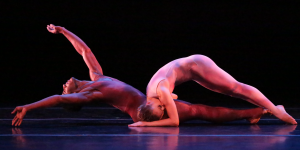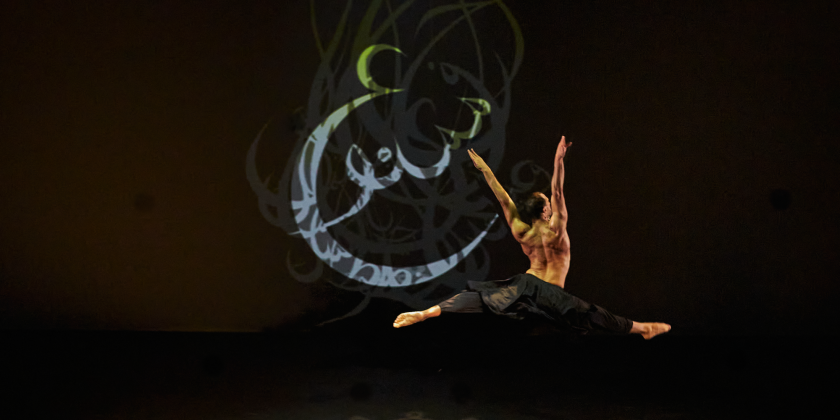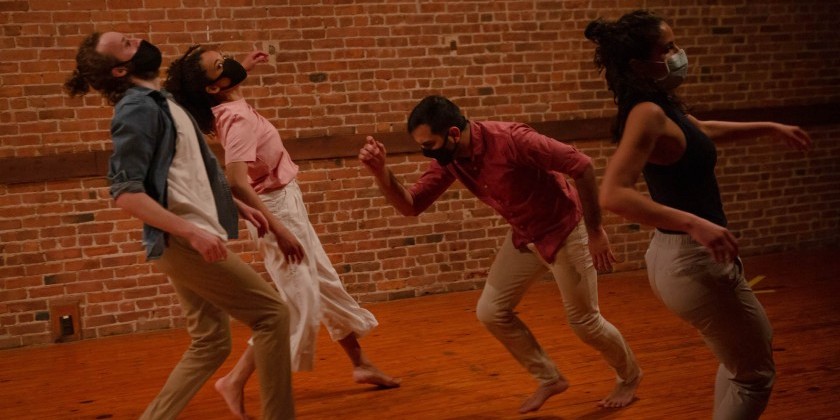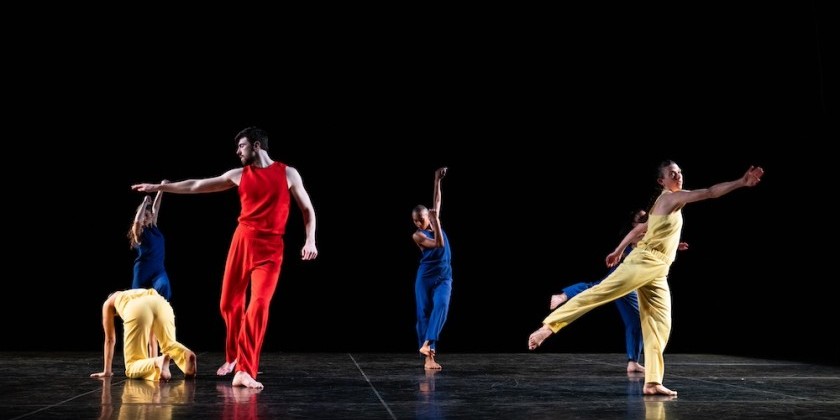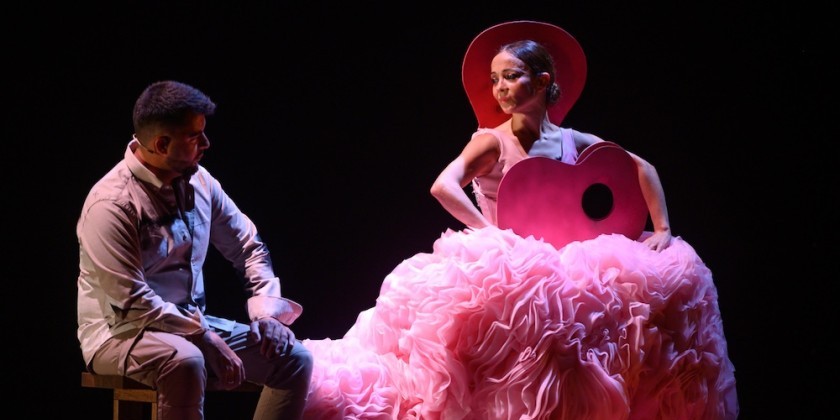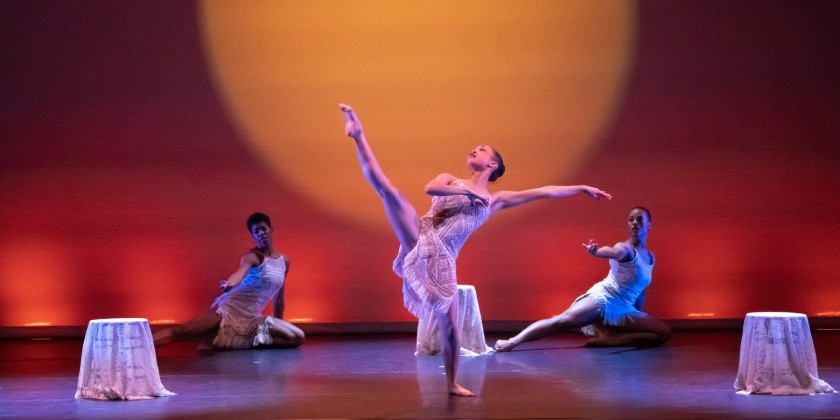Impressions of: Mau in "Birds With Skymirrors"
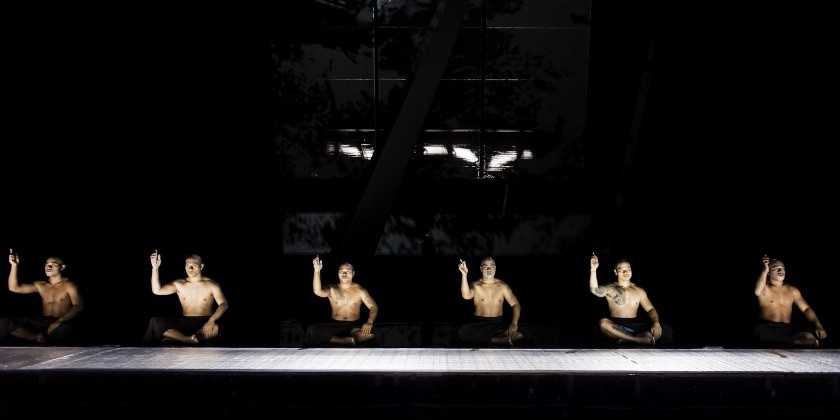
Possessed by Shadows
Samoan choreographer Lemi Ponifasio believes that darkness opens our eyes.
Darkness makes us wary. Sharpening our vision, we strain to pierce the shadows that drape familiar objects and we gaze into the unknown. Darkness changes the rules. It undermines our confidence that we are masters of the world.
That’s the point, perhaps, of Birds with Skymirrors, the hair-raising work that Ponifasio’s Mau company, from New Zealand, performed at the Howard Gilman Opera House, on Nov. 19, making its BAM debut.
Keenly aware that rising sea levels associated with global warming are inundating the small, island nations of the Pacific and destroying his home, Ponifasio has a less than sanguine view of humankind’s ability to subjugate nature. Perhaps it is not darkness that deceives us, but all the light---the electricity buzzing 24/7 in the modern world to keep our fears at bay. This artificial daylight blinds us to our limitations, and to our true relationship with nature. So, as if it were a traditional Samoan house, Ponifasio keeps his stage open. He wants us to experience midnight.
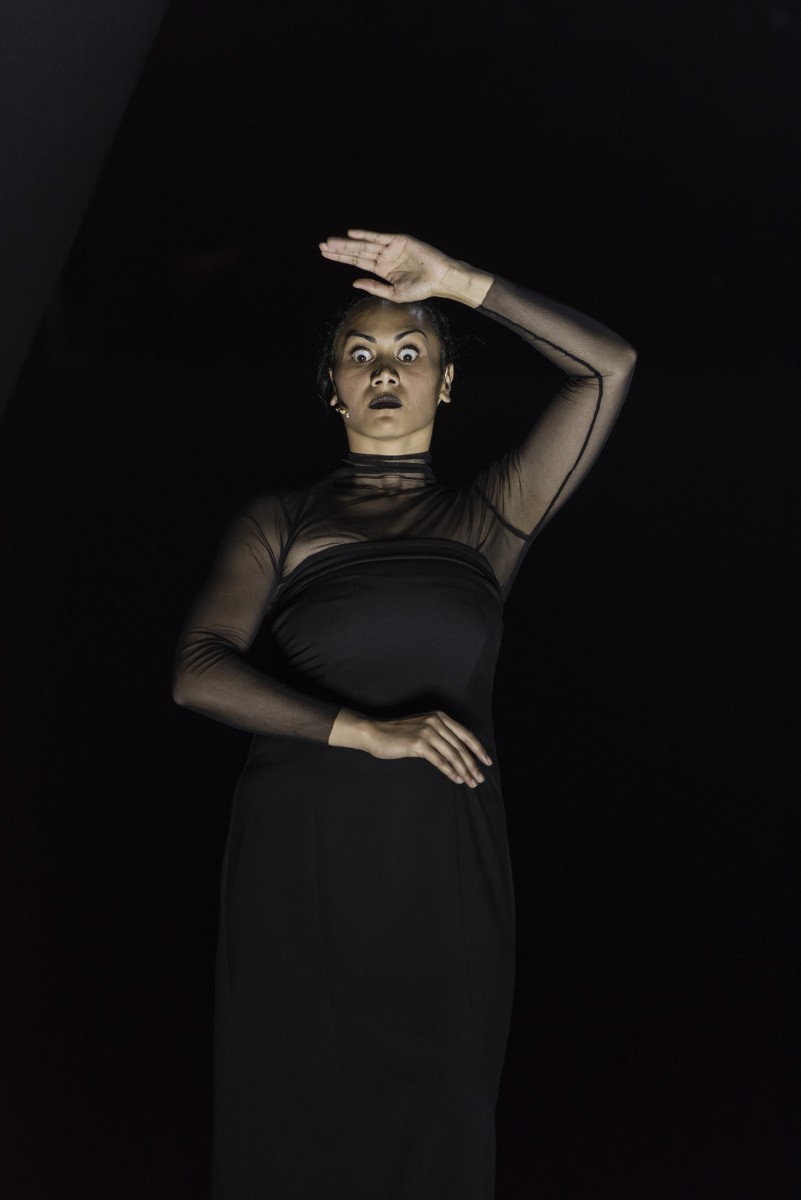
To the average person accustomed to the comfort of reaching out and turning on a lamp, this embrace of darkness makes Birds with Skymirrors a scary place to be. The dance occupies a middle plane between the floor and a “ceiling” of plastic panels. These surfaces gleam dully, reflecting designer Helen Todd’s weak but carefully calibrated illumination, which strikes the set indirectly. At times a mysterious band of light like the edge of a brush-fire glows at the front of the stage, while the interior displays a colorless spectrum that ranges from dingy gray to jet-black. The space seems desolate and uncaring, with nothing but a tilted beam, like a fallen girder, propping up the sky. Its inhabitants live in a state of permanent eclipse, and risk falling into oblivion.
Birds with Skymirrors recalls other pieces in which darkness plays an important role. Merce Cunningham’s creaky Winterbranch comes to mind, as does Eiko and Koma’s Water, performed outdoors after sundown. Yet while Ponifasio’s work is modern it is also based in the native traditions of Polynesia. The stage is a meeting ground where rituals take place; and our connections to the people, the animals and the supernatural beings who appear there may offer a kind of comfort stronger even than our ability to switch on a bulb. We are less vulnerable when we band together, remembering our dead, and Ponifasio invites us to become part of the network of creation. Similarly time seems to grow in Birds with Skymirrors, where the action is slow and irregularly paced. If not boundless, the passage of time here is certainly grander than the niggling minutes and portions of an hour that we typically measure out for ourselves to live by.
At first the outline of a man’s shoulders is barely visible amid the gloom. Gradually we can see more, as a transparent stream seems to wash over his body. In reality, it is his torso that moves undulating with terrific strength beneath a sheath of light. The man’s body is tattooed, as if the surrounding shadows had possessed him.
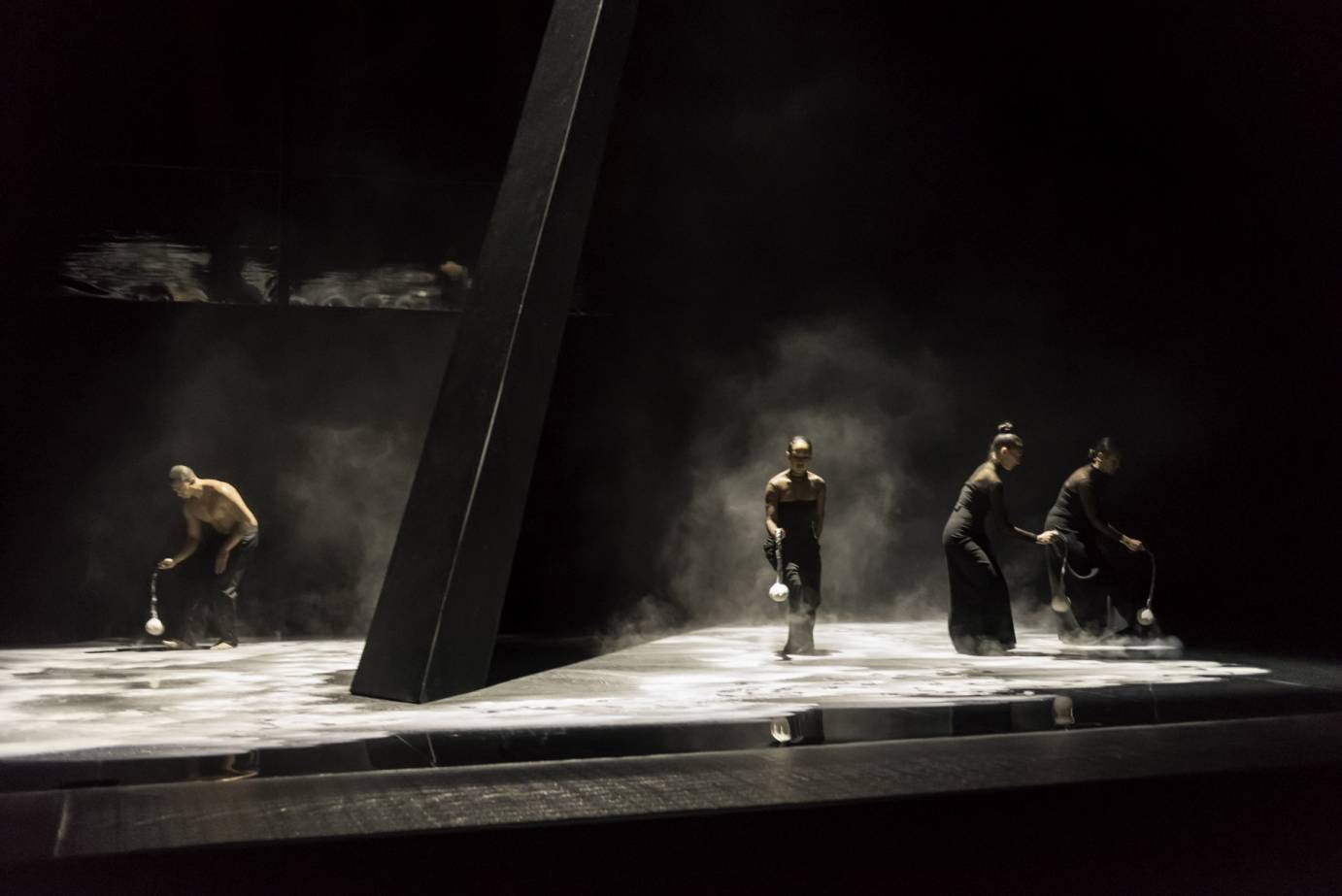
The action passes to the other side of the stage, where a bare-breasted woman takes up after the man, adding sharp gestures with a pointed finger or toggling her flattened palm. She squawks, making a piercing sound like an alarm in reaction to the ominous rumbling in the background. Later, she or another woman will sing a plaintive song.
Translated in the program, the poetry in Birds with Skymirrors recalls the origins of the world in darkness, and describes a society in which the living converse with past generations. Movingly the astronauts of Apollo 11 are a part of this extended family, too, and we hear a recording of their voices as they descend to the surface of the moon. We are left to ponder what the 1969 moon landing — arguably our greatest technological achievement — signifies now, at a time of looming catastrophe.
At different moments in Skymirrors, the dancers may expose themselves or appear in costumes that, like the lighting, offer varying degrees of transparency. Men scurry about wearing monastic robes. Later they are bare-chested, sitting in a line and swaying to a rhythm that they accent by slapping themselves.
This seated dance may be the highlight of the piece for some viewers. Apparently rooted in a traditional prayer to the dead, the men’s beautiful arm movements are sharp and round by turns; and they perform them with a sense of ownership. Their style is not something put on for the occasion but seems part of their identity. The movement dives and surfaces buoyantly, seeking equilibrium.
While the three women in the piece make some of the same gestures, their aspect is fiercer, their eyes wide and staring. Toward the end, they appear dangling small white globes the size of Christmas-tree ornaments. At this moment, they might be spirits holding the moon on a string. It later develops that the globes are bags filled with ashes, which will be shaken out to coat the floor.
Birds with Skymirrors has an ecological message to impart. Ponifasio was inspired to make the piece after he saw birds in flight carrying shiny strips of videotape in their beaks. During the piece, the image of a pelican struggling in the surf returns intermittently. In case we miss the point that pollution and a warming climate will kill us, too, a dancer appears wearing a bird mask —- half-man, half-animal.
Ponifasio is not optimistic about our chances. Even more than “Requiem,” the piece he presented at the Lincoln Center Festival in 2008, Birds with Skymirrors feels like closing time in a world without sanctuary. Would the choreographer have gone to the trouble of making this piece, though, if he had given up?
Maybe it is still not too dark for us to see.







